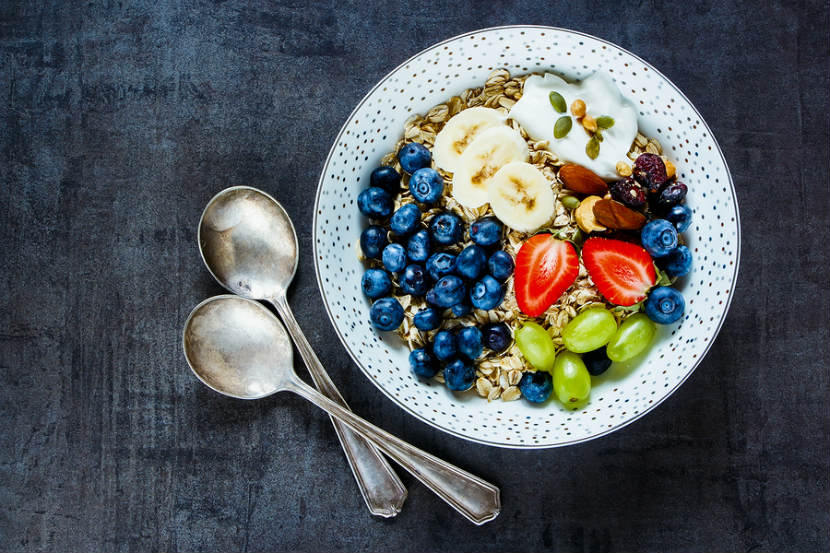
Diverticular disease is a digestive condition that may cause pain and discomfort in the abdomen, diarrhea or constipation, fever, chills and cramping. Read on to learn more about what causes diverticular disease and how to manage your symptoms.
What is diverticular disease?
Diverticular disease is the common name for having diverticulosis and diverticulitis:
- Diverticulosis means that you have small pouches (diverticula) in your colon (large intestine). These pouches form when there is a weak spot in the wall of your colon.
- Diverticulitis means the small pouches are inflamed or infected by bacteria.
What causes diverticular disease?
The causes of this disease are still not well understood. Diverticular disease may be caused by genetics or changes to the gut related to aging as well as infection by bacteria or viruses.
What are the symptoms of diverticular disease?
If you have diverticulosis, you likely will not have symptoms. Sometimes cramping, bloating or bleeding can occur. However, if you have diverticulitis, symptoms can include pain, tenderness or cramping in the abdomen, diarrhea or constipation, nausea and sometimes vomiting, fever and chills.
How can I prevent diverticular disease?
Get enough fibre
Choose whole grains, legumes (beans, peas, lentils), nuts, seeds and vegetables and fruit. The fibre found in these foods can help prevent diverticulosis. Use the chart below to find out how much fibre you need per day. Remember to slowly increase how much fibre you eat to avoid gas and bloating.
| Age |
Recommended amount of fibre per day (grams) |
| Males 19-50 |
38 |
| Males 50 and over |
30 |
| Females 19-50 |
25 |
| Females 50 and over |
21 |
Bonus! Find out how much fibre is in various vegetables, fruit, grains, legumes, nuts and seeds! A sample menu is also provided.
Drink enough water
Drink 1.5-2 L (6-8 cups) of water per day especially when you are increasing your fibre intake. Water helps fibre do its job. It also helps keep your stool soft.
Stay active
Being more physically active can help lower your risk of diverticular disease in combination with a high fibre diet.
Get enough vitamin D
Some research has linked vitamin D with diverticular disease. The amount of vitamin D you need per day depends on your age. Check this helpful chart in our vitamin D article to learn more. Vitamin D is not found naturally in many foods but is added to foods like milk, plant-based beverages, yogurt and you can also get some from fatty fish and egg yolks. If you have trouble getting enough, you may benefit from a supplement. In fact, Health Canada recommends that everyone over the age of 50 take a vitamin D supplement containing 400 International Units (or 10 micrograms) per day.
What foods should I avoid if I have diverticular disease?
There are no specific foods you need to avoid. You do not need to avoid any foods such as nuts, seeds, corn, popcorn or tomatoes if you have diverticular disease. These foods do not make diverticular disease worse. These foods may even help prevent it because they are high fibre choices.
How is diverticular disease treated?
If you have diverticulitis and your pouches become infected, you may need to stay in the hospital for a while and take antibiotics and/or pain medication. You may also need a special diet while your infection is being treated. Your healthcare team will guide you.
Should I take a fibre supplement for diverticular disease?
If you are not able to get enough fibre or continue to have symptoms even after eating a high fibre diet, consider adding a fibre supplement. Check with your dietitian or healthcare provider before you start taking supplements.
When should I see my health care provider?
If you have diverticular disease, speak with your healthcare provider if you are having pain, fever, diarrhea or vomiting. Speak to your healthcare provider if you think you may have diverticular disease.
How can a dietitian help?
A dietitian is an important part of your medical team when treating diverticular disease. They will work with you to make sure you are getting enough fibre and fluids and give you personalized advice that is easy to follow. If you have diverticulitis they will advise you on what to eat while the infection heals. Connect with a dietitian today!
Bottom line
Getting enough fibre, staying hydrated and being active are ways you can help prevent diverticular disease. If you have pain or other symptoms that concern you, speak with your healthcare provider.
You may also be interested in:
What You Need to Know about Ulcers
Constipation in Adults
Getting More Fibre
This article was written and reviewed by dietitians from Dietitians of Canada. The advice in this article is intended as general information and should not replace advice given by your dietitian or healthcare provider.
Last Update – December 20, 2022